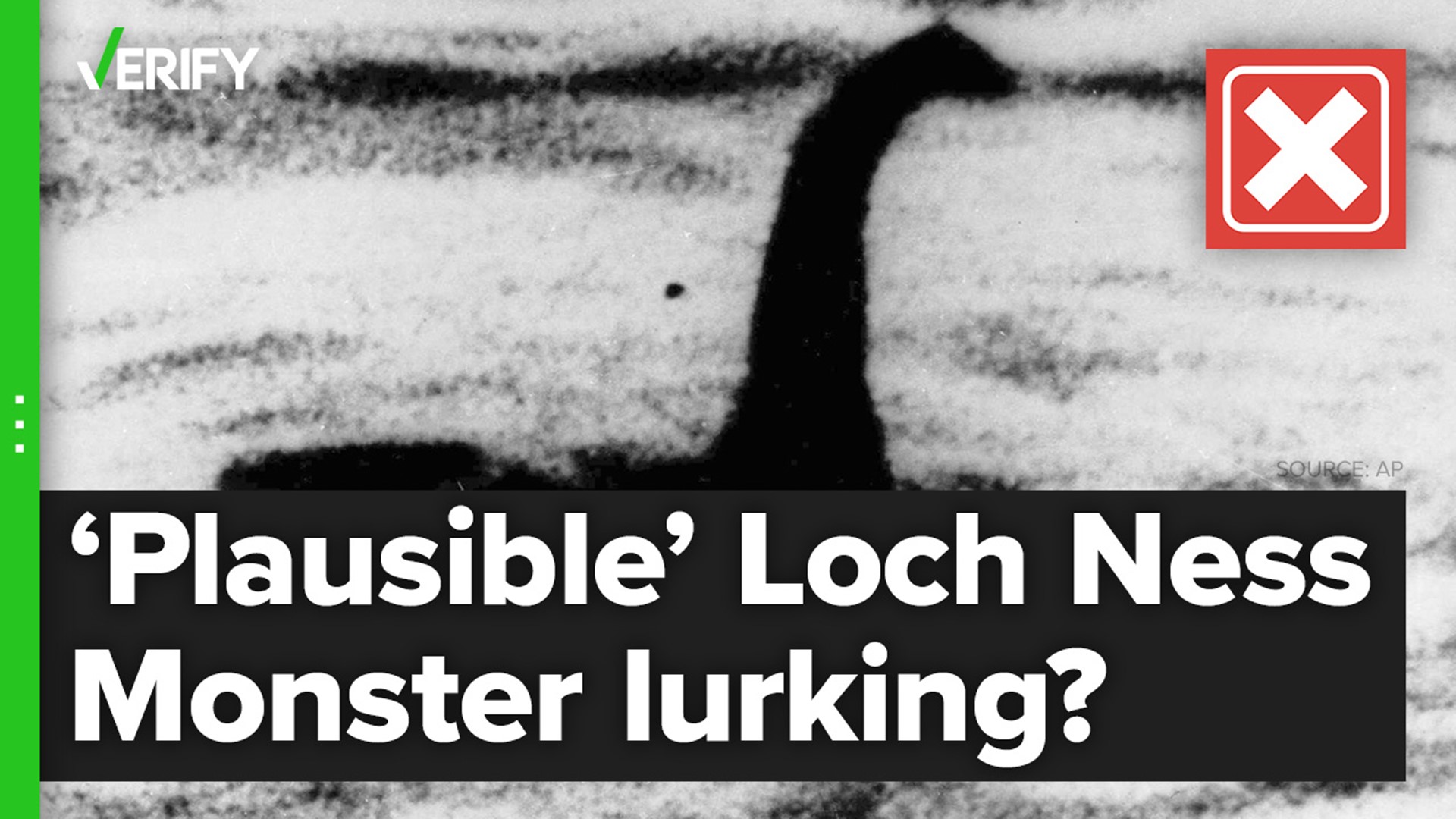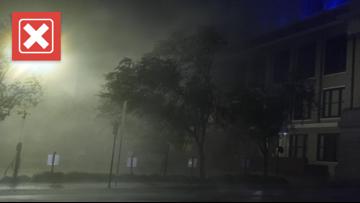The Loch Ness Monster’s legend has grown with global notoriety for nearly 100 years, and it has existed in local lore for much longer. The creature, nicknamed Nessie, is believed to be a sea monster that inhabits the Scottish lake it’s named after: Loch Ness.
The Telegraph and LAD Bible were two of many media outlets that ran headlines claiming the Loch Ness Monster’s existence in the modern era became “plausible” after a fossil discovery.
The stories claim that a team of researchers declared the existence of Nessie, the legendary sea monster that lives in a Scottish lake, “plausible” after an archaeological dig in Morocco found evidence that plesiosaurs, an ancient marine reptile that lived alongside dinosaurs, may have lived in freshwater.
According to legend, the Loch Ness Monster is best described as a plesiosaur.
THE QUESTION
Did scientists say a fossil discovery means it’s “plausible” the Loch Ness Monster is real?
THE SOURCES
Press release from the University of Bath
Press release from the University of Portsmouth
Study published by paleontologists about their findings
Nick Longrich, Ph.D., University of Bath paleontologist who co-authored study
THE ANSWER
No, scientists did not say a fossil discovery means it’s plausible the Loch Ness Monster is real.
WHAT WE FOUND
On July 21, scientists from the University of Bath, University of Portsmouth and Morocco’s Universite Hassan II released a study in which they reported finding fossils of small plesiosaurs in a 100-million year old river system in the desert areas of Morocco.
“This discovery suggests some species of plesiosaur, traditionally thought to be sea creatures, may have lived in freshwater,” a press release from the University of Bath said a few days later.
Plesiosaurs were ancient, aquatic reptiles that looked similar to and lived at the same time as dinosaurs. They had long necks and sharp teeth, and had flippers that were directly attached to their bodies. The biggest plesiosaur they could find among the fossils was about 10 feet long.
So how does this tie to the Loch Ness Monster?
The fossils, although smaller than the supposed 20-foot length of Nessie, look similar to the common interpretation of the Loch Ness Monster, which is believed to be a plesiosaur that has survived into the modern era, according to popular legend. But up until this new study, plesiosaurs were thought to only have lived in saltwater, and Loch Ness is a freshwater lake.
University of Bath addressed the legend of the Loch Ness Monster in their press release about the study. Researchers said while it’s “plausible” a plesiosaur lived in freshwater many millions of years ago, that doesn’t mean it’s plausible a large monster lives in Loch Ness today.
“But what does this all mean for the Loch Ness Monster? On one level, it’s plausible. Plesiosaurs weren’t confined to the seas, they did inhabit freshwater,” the press release reads. “But the fossil record also suggests that after almost a hundred and fifty million years, the last plesiosaurs finally died out at the same time as the dinosaurs, 66 million years ago.”
The University of Portsmouth used the same wording in its own press release about the findings. The Loch Ness Monster is never mentioned in the abstract of the study the researchers wrote on their findings.
According to paleontologist Nick Longrich, one of the authors of the study, headlines calling the Loch Ness Monster’s existence “plausible” are taking that line from the press release out of context.
“The existence of a plesiosaur in Loch Ness is not probable, or likely, or even plausible,” Longrich said in an email to VERIFY. “It turns out that plesiosaurs did enter fresh water (surprisingly often!), so *that one part* of the scenario is actually plausible, and it's conceivable that there were plesiosaurs that inhabited large lakes in the Mesozoic, like the Baikal Seal that lives in Lake Baikal today.”
Siberia’s Lake Baikal has the most water of any freshwater lake in the world, and it’s millions of years old. The Baikal Seal is the only large, oceanic animal evolved to inhabit a freshwater lake in the present day.
So this new fossil discovery indicates that, more than 66 million years ago, there were likely plesiosaurs that could inhabit a freshwater river. And it was even plausible that a plesiosaur could have existed in a large lake.
Longrich said that Loch Ness still wouldn’t fit the bill, even 66 million years ago. Loch Ness is too small, and isn’t old enough. It has 3,000 times less water than Lake Baikal, and is millions of years younger. Loch Ness was buried under a sheet of ice as recently as the last ice age 10,000 years ago.
“Buried under ice is not exactly a great place for a marine reptile to survive for thousands of years,” Longrich said.
Then there’s the final nail in the coffin, one which was mentioned in the press release itself: plesiosaurs died out 66 million years ago, according to the fossil record. Longrich said plesiosaurs, even just a small group of them restricted to a single Scottish lake, should have left behind some fossils if they survived continuously for the past 66 million years.
“So it's an interesting thought experiment, and curious that one part of the scenario isn't totally impossible, but all the rest are,” Longrich said.












